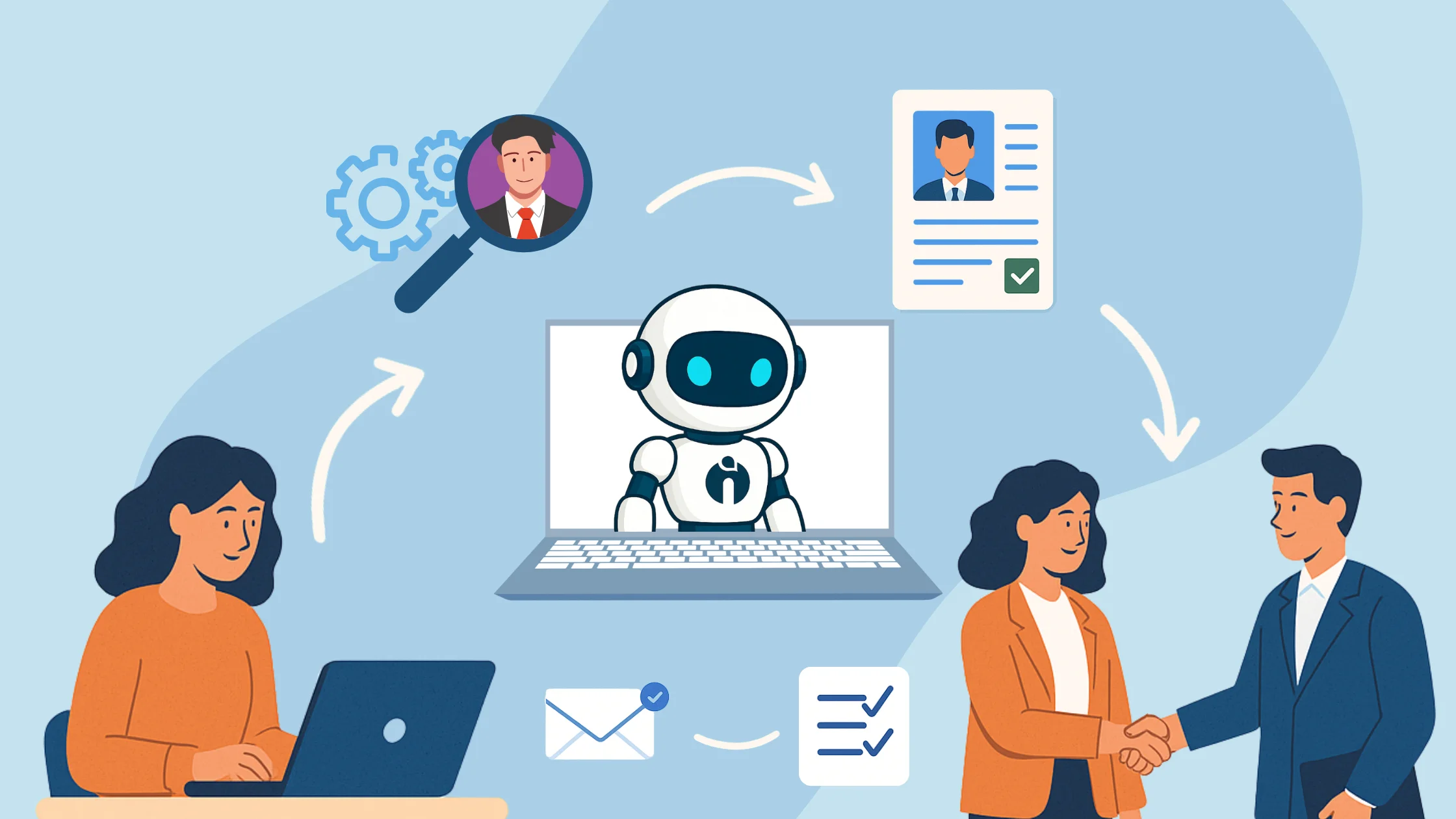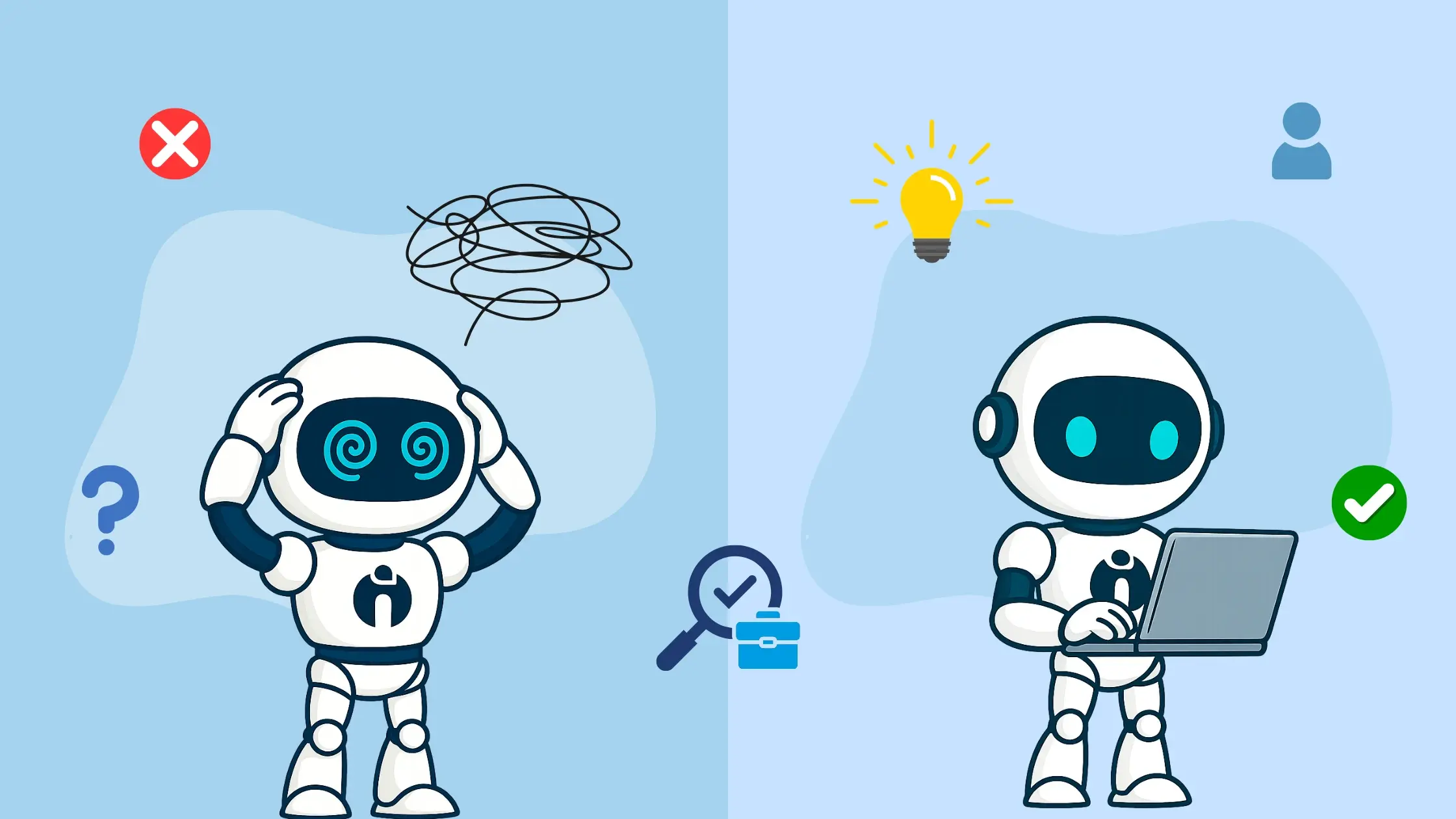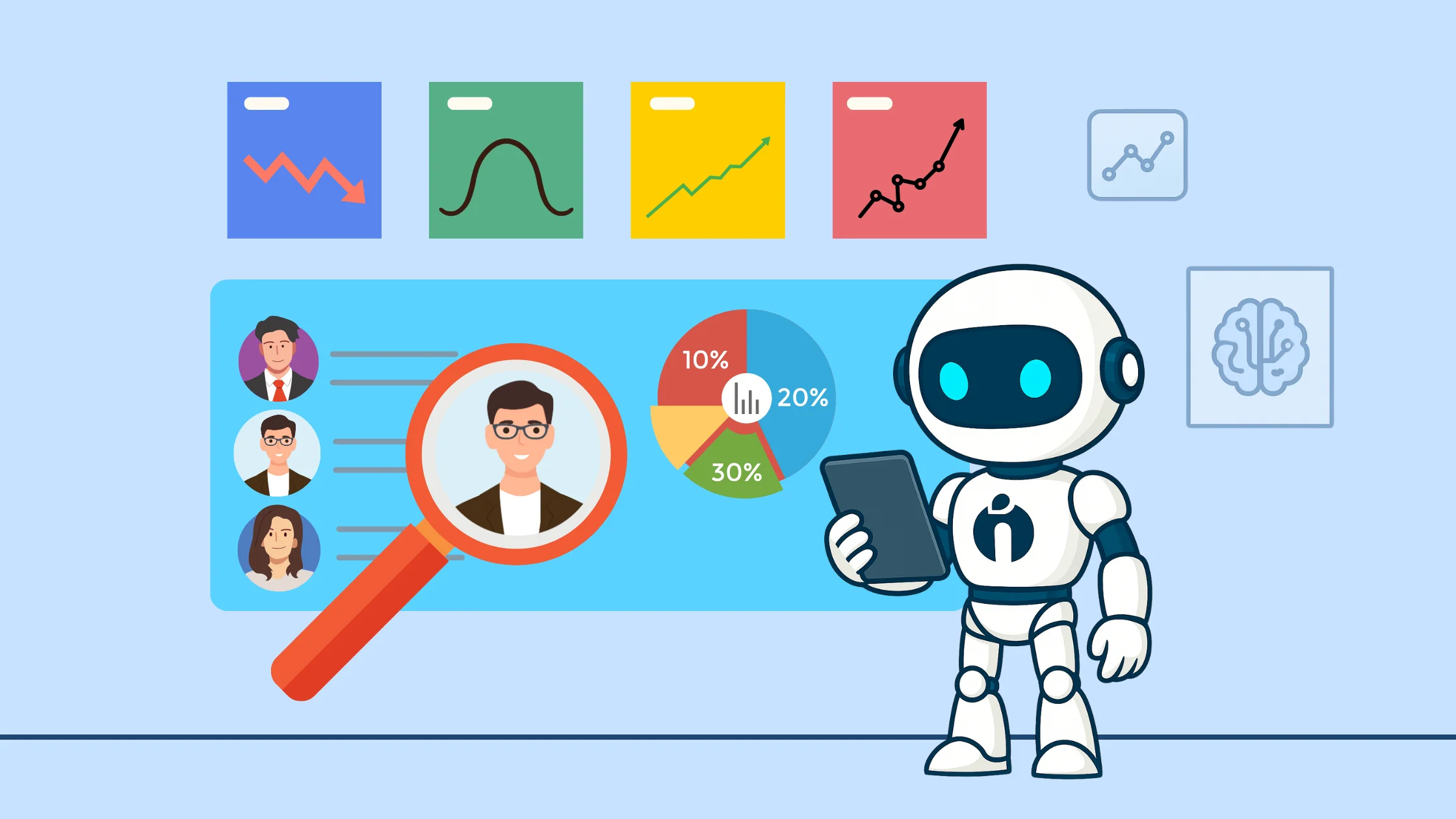TL;DR
- Manual job posting is time-consuming and prone to errors, hindering recruitment efficiency.
- Automation reduces time-to-hire by 25% and cost-per-hire by nearly 30%, improving hiring outcomes.
- Key benefits of recruitment automation include centralised job management, consistent branding, and real-time analytics.
- Automation tools streamline posting across multiple platforms, support high-volume hiring, and enhance candidate experience.
Even in 2026, manual job posting remains a surprisingly common challenge. While HR tech has come a long way, many recruiters and hiring teams are still stuck with time-consuming, outdated methods. From jumping between job boards and copy-pasting job descriptions to managing applications in endless spreadsheets, it's easy to see how these manual tasks can quickly drain your time and slow down your hiring.
Here, we'll explore the everyday struggles of recruiters with manual job postings that often go unnoticed. More importantly, we'll share simple, effective ways recruitment automation can help so you can work smarter, avoid errors, and scale your hiring without the usual headaches.
The Hidden Costs of Manual Job Posting
Relying on manual processes for posting jobs might seem manageable until it isn't.
Here's why:
- Time drain from repetitive tasks: HR teams waste hours every week uploading jobs to multiple platforms.
- Increased risk of errors: Typos, outdated content, and inconsistent formatting are common when updating listings manually.
- Reduced productivity: Time spent on admin tasks means less time for strategic recruitment and candidate engagement.
- Loss of top talent: In a fast-paced hiring market, delays or inconsistencies can cost you the best candidates.
According to a 2025 report by All About AI, Companies using automated job posting tools reduce their time-to-hire by 25% and cut cost-per-hire by nearly 30% compared to those still relying on manual job posting processes. These hidden costs quickly add up, especially for fast-growing teams.
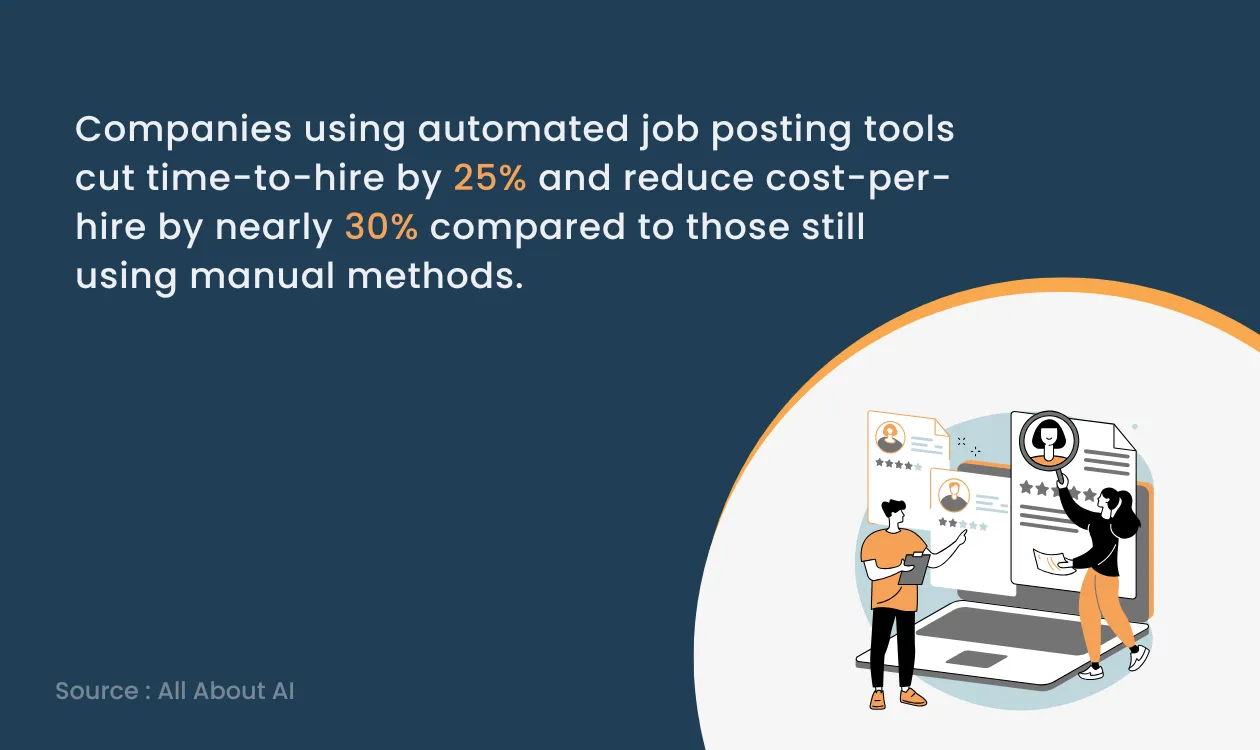
What Are the Common Challenges of Manual Job Posting?
If you're managing job posts by hand, you're likely dealing with:
- Multiple platforms: Posting the same job across job boards, career sites, and LinkedIn, one by one.
- Inconsistent branding: Varying job titles or descriptions across platforms weakens your employer brand.
- Limited control: Updating or removing expired job posts becomes a never-ending chore.
- No performance insights: Without unified data, it's hard to know which platform delivers the best candidates.
Manual recruitment problems don't just affect individual roles; they ripple across entire teams and departments.
Why Manual Posting Doesn't Scale?
When your hiring needs grow, manual hiring challenges multiply. Scaling becomes nearly impossible when you're stuck doing everything by hand:
- High-volume hiring = high admin load
Manual recruitment scaling requires more hours spent copying, pasting, editing, and updating listings. - Slower response times affect candidate experience
Delays in posting roles or removing filled positions lead to missed opportunities and disengaged candidates. - Inconsistent messaging across teams or regions
Without a centralised approach, it's easy for job descriptions, titles, and requirements to vary from one platform to the next, creating confusion and weakening your employer brand. - Lack of visibility and control
As your hiring footprint expands, managing posts across departments, regions, or time zones without automation becomes chaotic and error-prone.
Put simply, manual job posting just isn't built to keep up as your hiring needs grow. It takes up too much time, leaves too much room for mistakes, and doesn't offer the flexibility today's fast-moving recruitment world demands. If your organisation wants to scale or stay ahead of the competition, you need smart tools that can manage the workload without slowing you down or sacrificing consistency.
Signs It's Time to Automate
Here are some clear red flags that it's time to make the switch:
1. You're hiring for multiple roles across locations or teams
As hiring expands, so does the complexity. Posting each job manually across various platforms becomes unmanageable and increases the risk of errors or inconsistencies.
2. You're spending more time posting jobs than talking to candidates
If your recruiters are stuck in admin mode, it's a sign that automation could free them up to focus on what really matters: building relationships and improving the candidate experience.
3. You're relying on spreadsheets or emails to track postings
Manual tracking is not only time-consuming but also prone to miscommunication and data loss. As your team grows, these systems simply can't keep up.
4. You struggle to report on post-performance or ROI
Without integrated analytics, it's difficult to understand which job boards are delivering results and where your time and budget are being wasted.
If this sounds familiar, it's time to explore recruitment automation tools that help streamline and scale your efforts.
How to Solve Manual Job Posting Problems with Recruitment Technology?
1. Automated Job Distribution
With automated job posting, you can post once and publish across:
- Major job boards (e.g. Indeed, Glassdoor, LinkedIn)
- Company career pages
- Social media channels
You maintain consistent branding and messaging while cutting down repetitive work.
2. Centralised Job Management
Manage all listings from one platform:
- Edit, update or remove posts in real-time
- Avoid duplicate content and outdated listings
- Reduce errors and speed up the hiring cycle
3. Analytics and Performance Tracking
Get real-time data on job post performance:
- See which job boards deliver the best candidates
- Adjust your strategy and budget for maximum ROI
4. Job Templates and Approval Workflows
Boost consistency with pre-approved templates:
- Align job titles and descriptions
- Enable smooth collaboration between hiring managers and recruiters
- Maintain branding standards across departments
5. Integration with Job Boards and Career Sites
With recruitment automation software, integrations are seamless:
- Sync listings across niche and general job boards
- Keep posts current automatically
- Expand reach without additional manual effort
Transitioning from Manual to Automated Job Posting
Ready to modernise your recruitment process? Here's how to get started:
1. Prepare Your Team
- Communicate the benefits of automation
- Offer training on the new tools
- Assign clear responsibilities
2. Ensure a Smooth Implementation
- Migrate current listings into the platform
- Set up integrations with job boards
- Create job templates and approval workflows
3. Avoid Common Pitfalls
- Don't skip onboarding or training
- Avoid over-customisation too early
- Don't forget to monitor early performance data
Change can be daunting, but with the right recruitment automation software, it pays off quickly.
What Are the Long-Term Benefits of Automating Recruitment?
The payoff of automating your job postings goes beyond saving time:
- Faster time-to-hire: Speed up your hiring process by eliminating bottlenecks
- Improved candidate experience: Consistent, timely listings mean better engagement
- Enhanced team productivity: Recruiters can focus on interviews and strategy, not admin
- Stronger employer brand: Show candidates a polished, professional presence across platforms
These benefits are long-lasting and essential for companies looking to scale and compete in today's hiring market.
Conclusion
Manual job posting might feel manageable in the beginning, but as your hiring needs grow, it quickly turns into a bottleneck. Repeating the same tasks, dealing with errors, and trying to keep track of everything across different platforms can slow you down and make it hard to stay competitive in today's fast-paced hiring environment.
That's where automation comes in. It takes the weight off your team by cutting down on admin work, keeping your employer branding consistent, and giving you clearer insights into what's working. With less time spent on manual tasks, your team can focus on what really matters: connecting with great candidates.
Tools like iSmartRecruit bring all of this together in one place. From automated job distribution and centralised control to real-time analytics, it helps you streamline your recruitment process end-to-end. If you're looking to modernise how you hire, automation is a smart, practical step that boosts efficiency, improves candidate experience, and sets you up for long-term success.
Frequently Asked Questions (FAQs)
1. What are the manual job posting problems?
They include repetitive tasks, typos, outdated content, and inconsistent formatting, which can slow down your hiring process and risk candidate drop-off.
2. Why is manual job posting hard to scale?
As hiring grows, manually posting and updating listings consumes time and increases errors. It’s not sustainable for fast-growing teams.
3. How does recruitment automation help?
It posts your job across platforms in one go, keeps everything consistent, and shows which boards perform best, all from one dashboard.
4. What is job posting automation?
It’s a smarter way to manage job ads, automating distribution, updates, and performance tracking. Tools like iSmartRecruit make it easy to do this without a complex setup.
5. Does automation affect candidate experience?
Yes, in a good way. It ensures faster updates, fewer errors, and a smoother application journey for candidates.


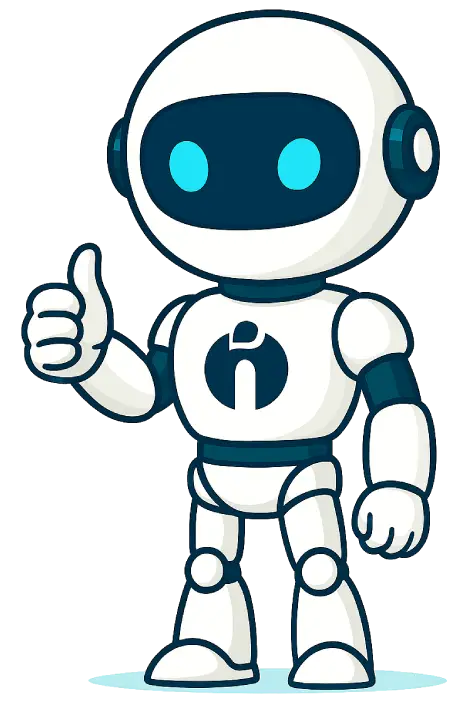






.png.png)

